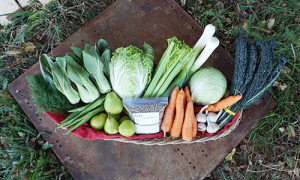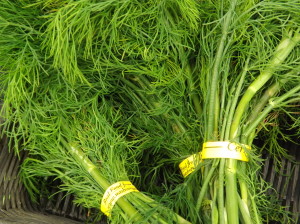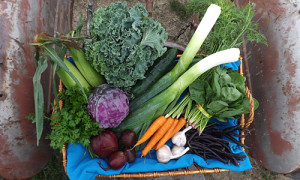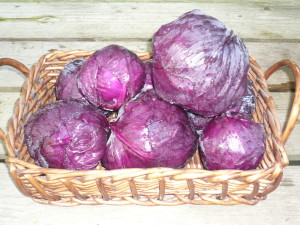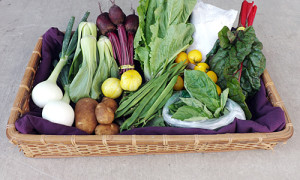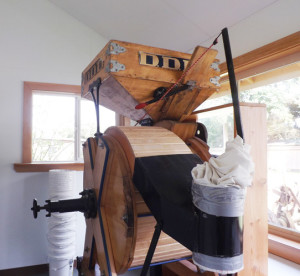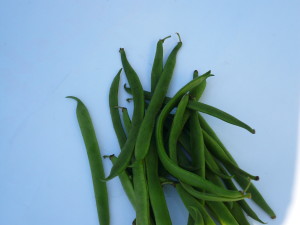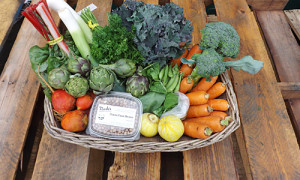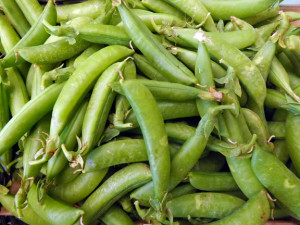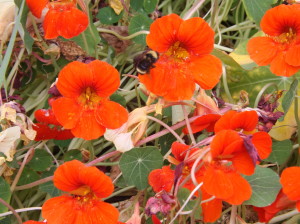Week 10, September 12
Both boxes have: Celery, baby dill, Lacinato kale, pears, leeks, bulk table carrots
The Small box also has: Garlic, Napa cabbage
The Standard box also has: Dried field peas, baby bok choi, runner beans, green cabbage
Nash’s celery crop this year succumbed to blight. Celery is a long season crop that takes a great deal of effort to grow, so needless to say we are pretty disappointed. The good news is that our friends at the Johnston Farm in Agnew have beautiful celery this year, which we’ve included in your box this week.
Fresh Dill
Fresh dill, with its wispy and fernlike green leaves, has a soft, sweet taste, and distinctive aroma and flavor. It is available during the summer and early fall, and provides an aromatic addition to pickles, salad dressing, chicken and fish, soups and salads. You can also dry dill by putting it in the dehydrator or hanging it in your kitchen, upside down. Store in glass jar, away from light, and you’ll have this aromatic herb to enjoy all winter.
Dill has anti‐oxidants that help protect the body against free radicals. Its volatile oils also help neutralize particular types of carcinogens, especially those carried by smoke, like cigarettes or charcoal grills. The oils also have been studied for their bacteria‐regulating effects. Dill is an excellent source of calcium, dietary fiber, manganese, iron, and magnesium.
Great ways to use fresh dill
- Add sparkle to a tuna sandwich.
- Enhance a cold gazpacho soup.
- Mix ¼ cup fresh dill with ¼ cup vinegar, 1 tsp. sugar, ½ tsp. salt, ¼ tsp. black pepper, and 2 Tbsp. olive oil. Add 2 sliced cucumbers, 1 cup sliced red onion, and 2 cut-up tomatoes. Toss, and let stand at least 15 minutes before serving.
- Got a favorite pureed carrot soup recipe? Be sure to garnish it with some delicate dill fronds for a treat that’s not only tasty, but visually appealing.
- Dill with salmon is a marriage made in heaven. Add finely chopped garlic, too!
- Add to Greek green salads, with romaine, sliced scallions and crumbled feta.
- Next time you make sourdough bread, throw in some olives and dill.
- Finely chop ½ cup dill and mix with 2-3 Tbsp. butter, salt, and pepper. For an incredible roasted chicken, use a spoon to get it under the skin of the breasts, thighs, and legs, and massage it around the meat before roasting. Stuff some into the cavity of the chicken with some lemon slices and garlic.
- Add to potato soup, or potato salad with lemon and green onion.
- Add to cole slaw, omelets, lentil dahl, borscht.
- Make dill sauce with 1/2 cup plain yogurt or sour cream, 1.5 Tbsp. Dijon-style mustard, 1 Tbsp. lemon juice, and 2 tsp. chopped, fresh dill. Chill before serving.
Lacinato Kale
Lacinato kale has a long tradition in Italian cuisine, and goes by several names, including dinosaur kale (because of its bumpy texture), black or Italian kale.
To prep kale, rinse the leaves. If you want to separate the stems from the leaves, grab the base of the stem, pinch the leaf between your fingers, and pull up the leaf. Chop the stems into sautés with onions at the beginning of the cooking process, as they may require a few more minutes to soften, but are tender when cooked. For less work, just take entire kale leaves, stems and all, and chop them into soups, stir-fries or pasta dishes. They can also be enjoyed raw in a salad, as in the recipe above.
Lacinato is high in vitamins A and C, as well as calcium, iron, and manganese, and is rich in easily digestible dietary fiber.
Try this Lacinato Kale and Ricotta Salata recipe.
Dried Field Peas
Please rinse the peas thoroughly and inspect them for any small pebbles that may have gotten through the seed cleaner. Soaking them overnight in water will reduce cooking time; then drain, add fresh water and boil until soft. Use field peas as you would any dried bean in your favorite recipes, such as hummus, bean dip or cold salads. You can also simmer peas on the stove top or in the crock pot for soups, stews and chilies.
We have several delicious recipes that call for Nash’s versatile dried field peas. You’ll find them at nashsorganicproduce.com/recipes/ingredient/field-peas/

